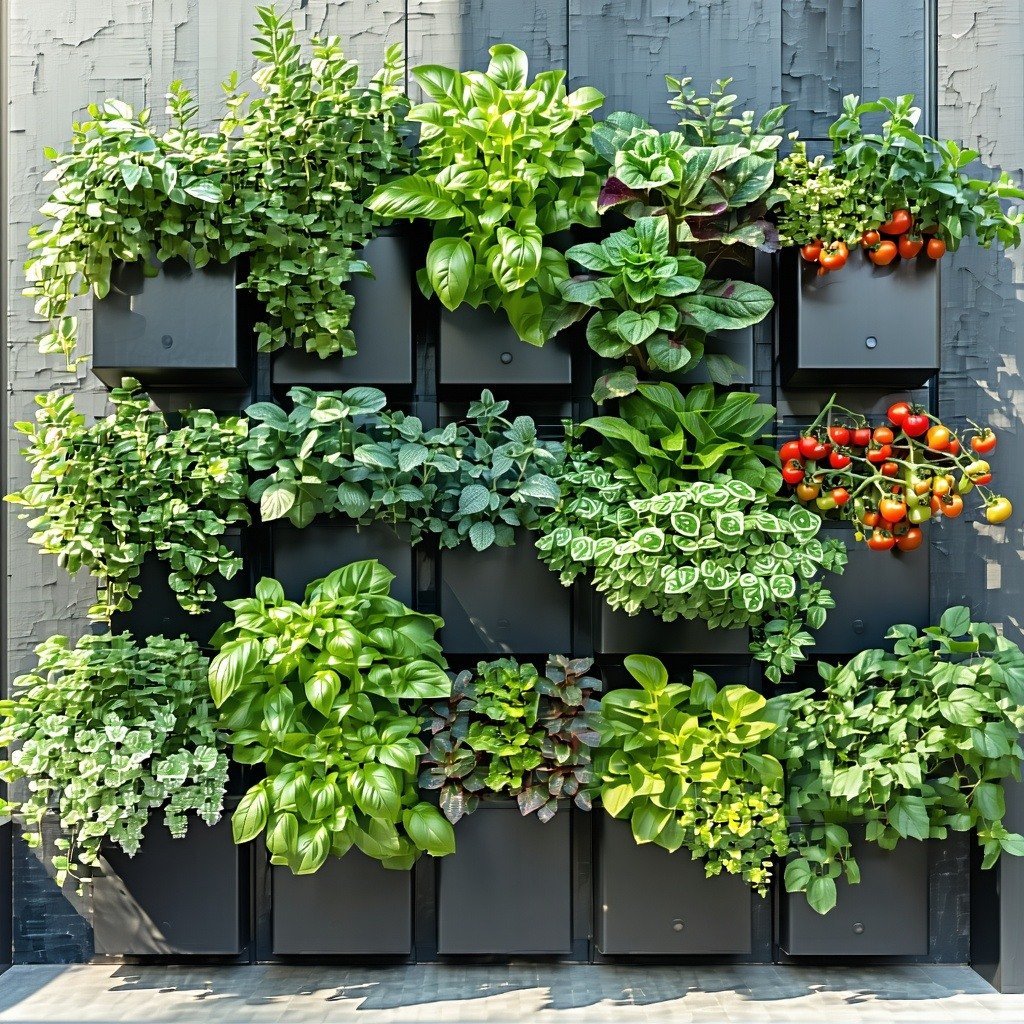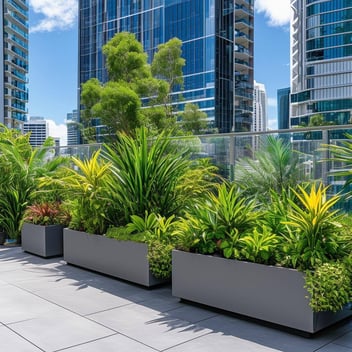Vertical Gardening with Podium Planters: SEQ Edition
In the bustling urban and suburban landscapes of South East Queensland (SEQ), space is a premium commodity. Yet, the desire for lush greenery and personal gardens remains undiminished. Enter vertical gardening with podium planters—a harmonious blend of innovation and nature, offering a verdant solution to spatial constraints.
Understanding Vertical Gardening
Vertical gardening is the practice of cultivating plants upward, utilizing structures like walls, trellises, or specialized containers to maximize growing space. Rooted in ancient civilizations, this method has been reimagined in contemporary urban settings to address the challenges of limited land availability.
The Advantages of Podium Planters in SEQ
Podium planters are elevated containers designed to support vertical plant growth. They offer numerous benefits:
-
Space Optimization: Ideal for balconies, patios, and compact yards, podium planters allow residents to cultivate a variety of plants without encroaching on valuable floor area.
-
Enhanced Air Circulation: Elevating plants improves airflow, reducing the risk of fungal diseases and promoting robust growth.
-
Aesthetic Appeal: Vertical arrangements create striking visual displays, transforming mundane walls into living artworks and contributing to urban biodiversity.
Climate Considerations for SEQ
SEQ's subtropical climate presents unique considerations for gardeners:
-
Humidity and Rainfall: High humidity and significant rainfall necessitate selecting plants that thrive in moist conditions and ensuring adequate drainage to prevent waterlogging.
-
Temperature Variations: Warm summers and mild winters allow for a diverse range of plant species, but it's essential to choose varieties that can withstand occasional temperature extremes.
Designing Your Vertical Garden with Podium Planters
Crafting a successful vertical garden involves thoughtful planning:
-
Structural Assessment: Ensure that walls or supports can bear the weight of the planters, soil, and mature plants.
-
Material Selection: Opt for durable, weather-resistant materials like treated timber, metal, or high-quality plastics that complement your aesthetic preferences.
-
Irrigation and Drainage: Implement efficient watering systems, such as drip irrigation, and ensure planters have proper drainage to maintain optimal soil moisture levels.
Plant Selection for Vertical Gardens in SEQ
Choosing the right plants is pivotal:
-
Edibles: Herbs like basil and mint, leafy greens, and compact vegetables such as cherry tomatoes flourish in vertical setups.
-
Ornamentals: Flowering plants like petunias and ferns add color and texture, enhancing visual appeal.
-
Natives: Incorporating indigenous species supports local ecosystems and often requires less maintenance.
Maintenance and Care
Regular upkeep ensures a thriving garden:
-
Watering and Fertilization: Establish a consistent schedule, adjusting for seasonal variations, and use appropriate fertilizers to nourish plants.
-
Pruning and Training: Regularly trim plants to encourage desired growth patterns and prevent overcrowding.
-
Pest and Disease Management: Monitor plants for signs of infestations or illnesses, employing organic remedies when necessary.
Sustainability and Environmental Impact
Vertical gardens, particularly those utilizing podium planters, offer substantial environmental benefits, especially in urban areas like South East Queensland (SEQ).
-
Mitigating the Urban Heat Island Effect: Urban environments often experience elevated temperatures due to heat absorption by buildings and pavement, a phenomenon known as the urban heat island effect. Vertical gardens can help reduce this effect by providing shade and through evapotranspiration, where plants release moisture into the air, cooling the surrounding environment.
-
Enhancing Air Quality: Plants in vertical gardens act as natural air filters, absorbing pollutants such as carbon dioxide and nitrogen oxides, and releasing oxygen. This contributes to improved air quality, which is beneficial for urban residents.
-
Promoting Biodiversity: Incorporating a variety of plant species into vertical gardens creates habitats for birds, insects, and other wildlife, thereby enhancing urban biodiversity.
-
Sustainable Practices: Utilizing upcycled materials, such as repurposed pallets or recycled plastics, for constructing podium planters contributes to waste reduction and promotes sustainability.
Conclusion
Embracing vertical gardening with podium planters in SEQ not only transforms limited spaces into lush, green sanctuaries but also contributes positively to the environment. By understanding the local climate, selecting appropriate plants, and employing sustainable practices, you can create a thriving vertical garden that enhances your living space and supports urban ecology.




